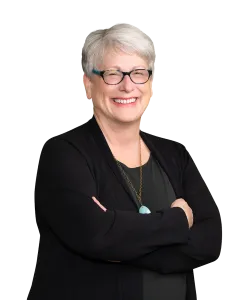Distributed Generation Law: A Conversation with Our Authors
Three AFS attorneys, Sarah Fitts, Amy Antoniolli, and Jane Montgomery, contributed to the first definitive guide about distributed energy generation, a trend that is transforming the U.S. power industry. The book, Distributed Generation Law: A Guide to Regulations, Policies, and Programs, is published by the American Bar Association Section of Environment, Energy and Resource.
Three AFS attorneys, Sarah Fitts, Amy Antoniolli, and Jane Montgomery, contributed to the first definitive guide about distributed energy generation, a trend that is transforming the U.S. power industry. The book, Distributed Generation Law: A Guide to Regulations, Policies, and Programs, is published by the American Bar Association Section of Environment, Energy and Resources and available here.
In this Q&A, our attorneys discuss why this book is a necessary read for developers, policymakers, and lawyers who want to seize business opportunities and gain a deeper understanding of how distributed generation is driving the restructuring of the nation’s electric power grid.
Q: What makes distributed generation such a hot issue in the industry right now?
Fitts: The technology is ahead of the regulations. There’s a lot of shoehorning new technology into old regulations. States vary in how they are supporting and regulating new technologies. It’s a real example of states being the laboratories of democracies in terms of trying new approaches. That’s interesting at an intellectual level, but it is immensely challenging and inefficient for companies trying to act nationwide.
There are the combined drivers of climate change, rising energy costs, solutions for the environment, and new interest in energy justice – all linked to technologies that can be reliable, closer to home, and sustainable. For example, there is a movement to close older urban power plants which emit pollutants tied to high urban asthma rates and replace them with renewables and battery storage. At the same time, there is interest in bringing generation closer to where it is used to create resilience to deal with storm-related power outages and improve energy efficiency. These competing trends could change how cities think about their infrastructure.
One of the questions raised by a growing reliance on distributed generation is about the continuing role of the central power system. In California, as part of fire mitigation efforts, utilities are now intentionally blacking out people to prevent wildfires sparked by long-distance transmission lines. And look at this summer’s hurricanes on the East Coast and the Derecho in the Midwest that knocked out power for extended periods. Communities and individuals are starting to think about building their own microgrids and generation to address these risks. Over time this trend could undercut the central premise of the bulk electric system — that it spreads the costs of providing reliable service at just and reasonable rates to all consumers — as those who have resources can build their own systems. We are a long way from this level of transformation, but how the technology and the regulatory system address these issues of equity and cost are profoundly important to how we will live in the future.
Montgomery: The federal government has been on the forefront of research to develop new and innovative technologies, new control systems that allow distributed generation to be controlled as it attaches to a larger grid, and new ways to think about who needs power and when. Developers and users have been actively trying to show that the regulatory structure developed when transmission lines spread across long distances needs to be modified to adapt to multi-directional power flows. What we are seeing is a mismatch between the possibility of technology and the static nature of law.
Q: Some states are taking the lead. What are they doing well?
Antoniolli: Because federal policies have not required the transition to cleaner fuels, the states have stepped in to try new things. They have adopted policies and legislation that encourage development of distributed generation facilities. States —and cities — are setting their own renewable energy goals. Just recently, Chicago issued a request for information to determine what planned renewable energy projects are available to the city to reach its goal of 100 percent renewable energy for city facilities by 2025.
But the policies among states differ based on where they are located geographically and the resources that are available and it is difficult for any state to wholly adopt the policies of another. They all have pluses and minuses. For example, Hawaii is grid-isolated in the middle of the Pacific Ocean while Illinois is in the Midwest with access to power from numerous sources and fuel types. So this book looks at how different states are addressing the issue given their unique circumstances.
Montgomery: The state regulation in New York is the first of its kind; it’s very cool and brand new, and other states are watching how it will be implemented. The state’s new process creates a common regulatory response to commonly raised issues and provides resources and a clearinghouse to local communities and developers alike. That takes away some developer uncertainty and upfront cost. What’s interesting is that states are all doing things differently from one another. You can’t point to one and say that’s the way to go. It’s a little bit touch and go all over the country.
Fitts: Governor Cuomo of New York is on record as saying that investments in renewable energy will spur the post-COVID recovery in New York State, and there have been several new renewable energy procurement initiatives this summer. But to mitigate the variable nature of renewable energy, the distribution grid will need to be strengthened as well — batteries, improved distribution, efficiency are all elements of the overall program being rolled out by New York State. Along with California, this is a transformative agenda and it is being carried out at the state level.
Q: What unique challenges do states face in hitting their goals?
Antoniolli: The question of how to value distributed generation is huge for states right now because they’re transitioning from traditional energy systems to distributed generation in different areas of the grid that never had to support this kind of intermittent generation or types of technologies before. So they are asking, how are we going to support the developers that are creating these new technologies and continue to provide customers with affordable and reliable energy? How are we going to value the benefits these new technologies are providing?
Montgomery: The defining character of electricity is that it’s used at the time it’s created. There’s a physics-based electron capacity on the wires that transmits electricity across the country which is immutable. The variation of power sources creates an imbalance along the system, so physically, states have to come up with a system that balances electrons while meeting climate goals and other kinds of emission and sustainability goals.
Q: How has the industry changed in the three years between the book’s conception and publication?
Fitts: In the first outline three years ago, we didn’t include batteries because there wasn’t yet wide-spread commercial adoption, and the most significant projects were still experimental. Today, you can’t have a conversation about distributed generation without talking about batteries.
The pace of electric car adoption has been slower than we expected because of the slowness in building out charging stations. The availability of electric charging stations will accelerate electric vehicle adoption, and with that, applications that are still mostly experimental, like car-to-grid charging, will need to be addressed by utilities and regulators.
We expected blockchain to be more important to distributed generation because we thought there would be more private systems that metered among users using blockchain technology. Those projects exist, but they are still novelties.
When we started the book project the United States was in the process of pulling out of the Paris Agreement, but we didn’t fully appreciate how states would take up the charge. As we worked on the book, we realized the focus would need to be on the states more than the federal government in many respects.
Antoniolli: Outside factors have both accelerated and hindered the development of new distributed generation technologies in ways that we did not anticipate. For example, new methods of drilling for oil and the low cost of gas have impacted the industry, and the COVID-19 pandemic accelerated the development of distributed generation from what we had anticipated.
Q: With the industry changing by the minute, what can readers expect in future editions of “Distributed Generation”?
Fitts: We already cover some cutting-edge issues in the book now — military applications of distributed generation and the applications to cybersecurity. Given that the U.S. Department of Defense is the world’s largest energy consumer, we can expect that national security and foreign affairs will continue to influence the growth of distributed generation. Some topics we may explore in the next edition include campus and university energy systems and other microgrids, as well as consumer protection issues because so much of distributed generation is marketed directly to consumers. In addition, given that the sourcing of components for distributed generation systems can be international, and many of the industry leaders are not U.S. companies, national security, supply chain and intellectual property rights may become more urgent issues in the coming years.
Contacts
- Related Industries
- Related Practices


